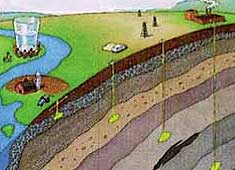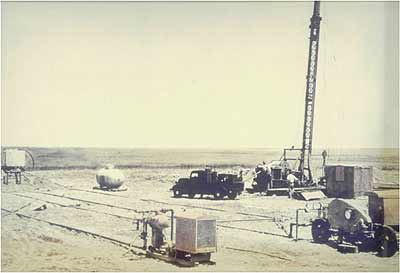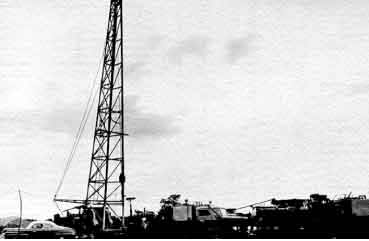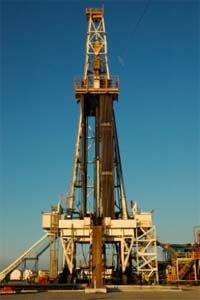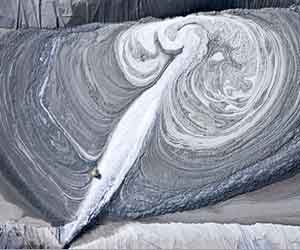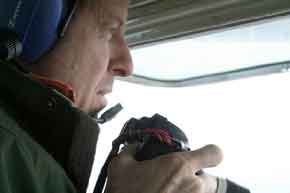Biblio
On 9-15-10, attending the EPA meeting on hydraulic fracturing for shale gas, professor of ecology and environmental biology, independent scientist Robert Howarth, Ph.D.,

told a news conference that natural gas extracted from shale is nearly as dirty as coal or perhaps even dirtier in terms of greenhouse gas footprint...
good grief:
...Our public comment to EPA was, in part, as follows:
Based on what we know so far, the EPA should order immediate suspension of high-volume hydrofracking until your study is complete. Let science guide policy. Otherwise we’re conducting a massive human, animal and earth experiment.
The gas will be there; it's not going away. Ideally any further carbon extraction at all should be banned while we accelerate development of sustainables but since that's probably not in the cards politically, it's imperative we at least do everything we can to reduce the harm we are doing to ourselves and our environment by extending our carbon binge in shale gas extraction. As others have mentioned,
I especially urge you to incorporate into your study the research of Prof. Robert Howarth and his team at Cornell on the methane greenhouse footprint that makes shale gas look nearly as dirty as coal if not even worse.
1976 video clip of M King Hubbert speaking about world oil depletion and explaining the concept of peak oil.
See article on the Energy Policy Act (2005).
Summary Points:
EPA’s central authority to protect drinking water is drawn from the Safe Drinking Water Act (SDWA).
The SDWA requires EPA to set legal limits on the levels of certain contaminants in drinking water.
The Safe Drinking Water Act (SDWA) also requires EPA to protect underground sources of drinking water (USDWs) from contamination caused by underground injection.
-
§1421 provides minimum standards for underground injection.
-
§1422 provides for state primary enforcement authority.
-
§1425 provides for alternative showing of effectiveness of program by state Underground Injection Control (UIC) Programs (Oil and Gas wells only).
-
§1431 contains provisions to address imminent and substantial endangerment.
Activities not regulated under Safe Drinking Water Act (SDWA) Provisions for UIC (Sections 1421, 1422, and 1425).
-
Oil and gas production activities.
-
Hydraulic fracturing (except use of diesel) per 2005 Energy Policy Act.
-
Natural gas storage.
States may choose to regulate these activities.
Surface water discharges are regulated under the Clean Water Act (CWA).
See: Safe Drinking Water Act (SDWA) | Safe Drinking Water Act | US EPA
See: Coalbed Methane Development: The Costs and Benefits of an Emerging Energy Resource
See: WATER | Safe Drinking Water Act - Wikipedia, the free encyclopedia
- Threats to water quality
- Inadequate regulation of hydraulic fracturing (including the Halliburton loophole)
- Hydraulic fracturing 101
- More facts, news, other information
Hydraulic fracturing is a common technique used to stimulate the production of oil and natural gas. Typically, fluids are injected underground at high pressures, the formations fracture, and the oil or gas flows more freely out of the formation. Some of the injected fluids remain trapped underground.
A number of these fluids, such as diesel fuel, qualify as hazardous materials and carcinogens, and are toxic enough to contaminate groundwater resources. Read more details in the Oil and Gas Accontability Project's (OGAP) basic primer on hydraulic fracturing.
Washington, D.C. based environmental advocacy group. Website includes link to video, Fracking and the Environment: Natural Gas Drilling, Hydraulic Fracturing and Water Contamination, from Democracy Now! It includes an interview with ProPublica's Abrahm Lustgarten. 9/3/09.
Fig. 1—In 1947, Stanolind Oil conducted the first experimental fracturing in the Hugoton field located in southwestern Kansas. The treatment utilized napalm (gelled gasoline) and sand from the Arkansas River.
Since Stanolind Oil introduced hydraulic fracturing in 1949, close to 2.5 million fracture treatments have been performed worldwide. Some believe that approximately 60% of all wells drilled today are fractured. Fracture stimulation not only increases the production rate, but it is credited with adding to reserves—9 billion bbl of oil and more than 700 Tscf of gas added since 1949 to US reserves alone—which otherwise would have been uneconomical to develop.
In addition, through accelerating production, net present value of reserves has increased. Fracturing can be traced to the 1860s, when liquid (and later, solidified) nitroglycerin (NG) was used to stimulate shallow, hard rock wells in Pennsylvania, New York, Kentucky, and West Virginia. Although extremely hazardous, and often used illegally, NG was spectacularly successful for oil well “shooting.” The object of shooting a well was to break up, or rubblize, the oil-bearing formation to increase both initial flow and ultimate recovery of oil. This same fracturing principle was soon applied with equal effectiveness to water and gas wells.
In the 1930s, the idea of injecting a nonexplosive fluid (acid) into the ground to stimulate a well began to be tried. The “pressure parting” phenomenon was recognized in well-acidizing operations as a means of creating a fracture that would not close completely because of acid etching. This would leave a flow channel to the well and enhance productivity. The phenomenon was confirmed in the field, not only with acid treatments, but also during water injection and squeeze-cementing operations.
But it was not until Floyd Farris of Stanolind Oil and Gas Corporation (Amoco) performed an in-depth study to establish a relationship between observed well performance and treatment pressures that “formation breakdown” during acidizing, water injection, and squeeze cementing became better understood. From this work, Farris conceived the idea of hydraulically fracturing a formation to enhance production from oil and gas wells.
Fig. 2—On 17 March, 1949, Halliburton conducted the first two commercial fracturing treatments in Stephens County, Oklahoma, and Archer County, Texas.
See: Carl T. Montgomery and Michael B. Smith. "Hydraulic Fracturing: History of an Enduring Technology." Journal of Petroleum Technology (JPT). 2010. (PDF 2.1 MB)
At the 2006 SPE Annual Technical Conference and Exhibition (ATCE), SPE honored nine pioneers of the hydraulic fracturing industry as Legends of Hydraulic Fracturing. Claude E. Cooke Jr., Francis E. Dollarhide, Jacques L. Elbel, C. Robert Fast, Robert R. Hannah, Larry J. Harrington, Thomas K. Perkins, Mike Prats, and H.K. van Poollen were recognized as instrumental in developing new technologies and contributing to the advancement of the field through their roles as researchers, consultants, instructors, and authors of groundbreaking journal articles.
This CD includes more than 150 papers published by these industry legends; it also includes an overview of the history of hydraulic fracturing, along with personal reflections from a number of the Legends and their colleagues.
Hydrafrac (1946)
See: Search for hydrafrac on Google Scholar.
See: Gow, Sandy, and Bonar Alexander Gow. Roughnecks, rock bits and rigs: the evolution of oil well drilling technology in Alberta, 1883-1970. University of Calgary Press, 2005. Web.
This book is a comprehensive study of the evolution of the component aspects of drilling technology in Alberta, from the evolution of power sources and drill bit designs to the composition of drilling muds and the use of fishing tools. Included are explanations of the costs and risks of oil well drilling and of the larger issue of industrial technology -- how it evolves and under what conditions. The author draws extensively from original source material such as interviews, photographs, and appendices from both the Glenbow Archives and the Devon-Leduc Petroleum Hall of Fame and Interpretive Centre.
The Stanolind patent (1946), p. 268, was the first patent issued for hydraulic fracturing. You may preview this page by clicking on the snippet in the link I've provided.
See: George C. Howard. "Well Completion Process." Stanolind Oil and Gas Company. Tulsa, OK. June 29, 1949. U.S. Patent number: 2667224, Filing date: Jun 29, 1949, Issue date: Jan 1954.
See also: Erle P. Halliburton. "Method and Apparatus for Drilling Wells, Such As Oil Wells." New Wilson, OK. U.S. Patent number: 1703234, Filing date: Nov 4, 1920, Issue date: Feb 1929.
See: Google Labs Books Ngram Viewer of the historical usage of the term "hydraulic fracturing". Try the word frack or fracking.
Read the report, Protecting New York’s Air, Land, Water and People: What’s the Hydro-Fracking Rush? (PDF 3.1 MB)
Read Deep Pockets, Deep Drilling, published by Common Cause, July 2010 (PDF)
Read "Affirming Gasland" (PDF) from Damascus Citizens
Supporting materials and other information
County and Town Hydro-Fracking Resolutions
NYS Bills on Environmental Effects of Fracking
Comments submitted by governments, agencies, and organizations on New York’s proposal to permit Hydro-fracking for natural gas extraction in the Marcellus and Utica shale formations.
Photos and related videos of our Hydro-Fracking Day of Action
See this 92 page report criticizing the 2009 New York State DSGEIS:
Myers, Tom. Review and Analysis of DRAFT Supplemental Generic Environmental Impact Statement On The Oil, Gas and Solution Mining Regulatory Program Well Permit Issuance for Horizontal Drilling and High-Volume Hydraulic Fracturing to Develop the Marcellus Shale and Other Low-Permeability Gas Reservoirs. Technical Memorandum. Citizens Campaign for the Environment. New York NY: Natural Resources Defense Council, December 28, 2009. (92 pages).
Hydraulic fracturing, more commonly known as hydrofracking, is the process of extracting natural gas from underground rock formations. And, it’s increasingly becoming a topic for debate in New York State. Where do New Yorkers stand on the issue?
Click Here for Complete May 17, 2011 NYS NY1/YNN-Marist Poll Release and Tables
No Consensus

Photo by Neil Zusman
According to this NY1/YNN-Marist Poll, New Yorkers divide on the issue. 41% oppose hydrofracking while 38% support it. A notable 21% are unsure. Similar proportions of registered voters statewide share these views.
Regionally, there’s no majority on either side of the ledger. 47% of those upstate are against hydrofracking while 37% support it. 39% in New York City oppose the process while 35% favor it. However, in the suburbs of New York City, 46% are for hydrofracking while 36% are against it.
There are partisan differences on this question. While pluralities of Democrats — 47% — and non-enrolled voters — 46% — oppose the process, nearly half of Republicans — 49%– support it.
“Many New Yorkers have yet to weigh in on this issue,” says Dr. Lee M. Miringoff, Director of The Marist College Institute for Public Opinion. ”The question is what will happen to the public’s opinion about hydrofracking as both sides make their case.”
See:Table: Support for Hydrofracking in NYS
See: Environmental Advocates New York
See: Action Center | Republicans for Environmental Protection (REP America)
See: New York State Assembly Passes Moratorium on Hydrofracking | Governor Vetoes Bill
See: Regulation Is Lax for Water From Gas Wells
See: Catskill Citizens | More Damning Evidence About Fracking
Visit Toxics Targeting for more information.
Ignitable Drinking Water From a Well in Candor, New York, Located Above the Marcellus Shale Formation (Spill #: 0811696)
See Walter Hang's letter to NYS DEC Commissioner Pete Grannis, 4/2/10.
Organization web site features a widget that shows how you are connected to mountaintop removal where you live.
You Can End Mountaintop Removal.
Mountaintop removal is a radical form of coal mining in which entire mountains are literally blown up -- and it is happening here in America on a scale that is almost unimaginable.
Please take a moment to learn more about mountaintop removal mining -- and then join us by taking action to stop it.
See: Welcome to Rogers Neighborhood | House Passes Dangerous Budget in the Dark of Night
See: GOP Budget Amendments Would Destroy Health, Economy, Planet.
See: Michael Cusack O'Connell. (film). Mountaintop Removal.
Opens with a great critique of the word "sustainability".
We followed a trail of yellow liquid draining from the back of the site downstream past a neighboring industrial bakery and into the Edison Glen and Edison Woods residential developments.
There we videotaped a child playing in the poisoned stream who told us it was a good place to hang out and look for frogs and turtles. I subsequently found out that the vacant Superfund lot was a playground for local children, the chemical lagoons were their wading pools, and adults routinely scavenged materials from the site.
Bob [Spiegel] called the Environmental Protection Agency (EPA) and when their response seemed to be limited to posting a few warning signs, he and his friend rented a movie theatre and showed their videotapes to increasingly agitated crowds. “We scared the hell out of everybody,” Spiegel says. The EPA immediately scheduled a public meeting.
--Molly Ivins’ Bushwhacked (Chapter 3)
New Jersey non-profit that among other activities, helps citizens engage in and advocate for the environmental well-being of their communities.
See: How to apply.
Ted Williams. Audubon. Jan/Feb. 2010. "Incite".
"...So deficient is the draft that it drew sharp criticism even from the laconic U.S. Environmental Protection Agency. The EPA says the draft ignores or glosses over: cumulative impacts, threats to the Catskill reservoirs that supply nine million people in and around New York City with untreated drinking water, maintenance of wastewater pits, threats to air quality, health risks of frack-water flowback, impacts on aquatic ecosystems from water withdrawals, and dangers to Important Bird Areas, which sustain all the forest-interior birds threatened by ongoing fragmentation in Pennsylvania."
WHAT YOU CAN DO
To follow Marcellus gas development and learn how to help control it, go to these websites: PennFUTURE, ConserveLand.org, Pinchot Institute for Conservation, and Penn State College of Agricultural Science’s Cooperative Extension.
The Day After Tomorrow, (available 2/8/2011) takes readers on a journey to bear witness to the environmental destruction that is currently plaguing our planet; from a forest in West Virginia devastated by mountaintop removal mining, to a region in Florida left in ruins by the phosphate mining industry, J. Henry Fair presents hard evidence that our unchecked consumerism is leading the way in the destruction of our planet, one natural resource at a time.
Overspray of drilling slurry at hydro-fracing drill site. Waste pit of drilling mud (byproduct from mining operations including rock debris, drill bit lubricants, and possibly residual radioactive material.)
The type of waste being produced indicates that exploration is still in progress. The overspray at the top is a violation and a danger to any water bodies downhill.
Photographer J Henry Fair is best known for his Industrial Scars series, in which he researches our world's most egregious environmental disasters and creates images that are simultaneously stunning and horrifying.
Anne C. Mulkern, Greenwire. May 7, 2009. New York Times.
Fearing a push by House Democrats to regulate a controversial form of natural gas production, an industry coalition [Energy in Depth] launched a campaign yesterday arguing that new rules would kill jobs and batter the economy. [See Sourcewatch: Energy in Depth]
The coalition of independent oil and gas companies says a Democratic proposal to allow new oversight over hydraulic fracturing would slash domestic oil and gas production and cost the Treasury $4 billion in lost taxes, royalties, rents and other payments. But environmentalists and an aide to a Democratic lawmaker backing regulation say the claim amounts to "scare tactics."
...The 2005 Energy Policy Act exempted hydraulic fracturing from regulation under the Safe Water Drinking Act. But Rep. Diana DeGette (D-Colo.) proposed a bill last year to repeal that exemption. DeGette is now talking with Energy and Commerce Chairman Henry Waxman (D-Calif.) about either inserting her bill into pending climate legislation or reintroducing the measure on its own.
"We're hoping to move this forward shortly," DeGette spokesman Kristofer Eisenla said. Without federal oversight, he said, there is no way to really track whether the process is safe.
...The fate of bills before Congress related to regulation of hydraulic fracturing is critically important. Congress exempted hydraulic fracturing from regulation under the Safe Drinking Water Act in 2005, but a bill was introduced last summer to federally regulate hydraulic fracturing under the act.
Regulations developed by the EPA under such a bill are unknowable at this time, but they could be expensive. Congress continues to debate the need for broader regulation and has asked the EPA to study the impacts of hydraulic fracturing on drinking water sources.
The industry needs a better, more effective way to advocate and communicate the benefits of fracturing to media, to the public, and to officials whose decisions could impact the future of the technology — and of the nation’s efforts to achieve energy independence.
Claude Cooke. "Industry responds to public take on hydraulic fracturing." Hart Energy E & P. Mar. 1, 2010.
See: Tom Hamburger and Jim Puzzanghera. "Obama a business booster in Chamber of Commerce speech." LA Times. Feb. 7, 2011.
President Obama seeks fresh start with the U.S. Chamber of Commerce, with whom he has had a prickly relationship.
Obama sought to distinguish between inefficient government regulation of the kind he raised in his State of the Union speech — over things like salmon — and a more legitimate government role in areas such as the environment.
"Even as we work to eliminate burdensome regulations, America's businesses have a responsibility to recognize that there are some safeguards and standards that are necessary to protect the American people from harm or exploitation," he said Monday. "Few of us would want to live in a society without the rules that keep our air and water clean … yet when standards like these have been proposed, opponents have often warned that they would be an assault on business and free enterprise."
The audience welcomed Obama with a standing ovation and laughed politely when he joked they "would have gotten off on a better foot if I had brought over a fruitcake when we first moved in."
But there was little hearty applause, and after the president shook a few hands and walked back to the White House, Chamber members were guarded in their reviews of his message.
See: Pollution in Your Community
See: Draft Plan to Study the Potential Impacts of Hydraulic Fracturing on Drinking Water Resources
See: Pew Environment Group (PEG) Factsheet: Industry Opposition to Government Regulation (PDF), October 14, 2010.
Elizabeth Larkin, Cortland County Clerk. You can search Land Records at the Cortland County Clerk's Office online and read the full-text of lease documents and see if your neighbors have already signed gas leases.
Instructions
Click "Search Land Records". On the next page, just click "Log In", you do not need a password. On the next page, click "I accept".
On the next page, uncheck "Ignore party type when search for name"; change the dates if you wish, choose "Document Type: Lease" from the drop-down menu.
Next to the field that says "Town", use the pull-down menu to pull down your town and then click the search button at the top right of the page. You can also try variations.







